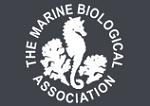APHOTOMARINE
An educational resource dedicated mainly to the photography
and diversity of marine life that can be found in coastal waters
and intertidal areas of Great Britain and Ireland by David Fenwick.

Lipophrys pholis
- underwater 1
Blenny / Shanny
Lipophrys pholis
- in rockpool 1
Blenny / Shanny
Lipophrys pholis
- in rockpool 2
Blenny / Shanny
Lipophrys pholis
- in rockpool 3
Blenny / Shanny
Lipophrys pholis
- side view 1
Blenny / Shanny
Lipophrys pholis
- side view 2
Blenny / Shanny
Lipophrys pholis
- female / side view 1
Blenny / Shanny
Lipophrys pholis
- male / side view 1
Blenny / Shanny
Lipophrys pholis
- head 1
Blenny / Shanny
Lipophrys pholis
- head 2
Blenny / Shanny
Lipophrys pholis
- juvenile fish 1
Blenny / Shanny
Lipophrys pholis
- juvenile fish 2
Blenny / Shanny
Lipophrys pholis
- juvenile fish 3
Blenny / Shanny
Lipophrys pholis
- eggs 1
Blenny / Shanny
Lipophrys pholis
- eggs 2
Blenny / Shanny
Lipophrys pholis
- eggs 3
Blenny / Shanny
Lipophrys pholis
- eggs 4
Blenny / Shanny
Lipophrys pholis
- eggs 5
One of the most common rockpool fishes around the Devon and Cornwall Coast. The species has been photographed all over the region, places include; Batten Beach and Devil's Point, Plymouth, Devon; and at Spit Point, Par; and Roskilley near Newlyn, Cornwall. Care needs to be taken on handling blennies as they can bite. The bite is not poisonous.
In Cornwall, the species is historically called Janny or Mulligranoc.
Scientific and European Names:
Lipophrys pholis, Blenny, Smooth blenny, Shanny, Schan, Slijmvis, Mordocet, Blennie pholis, Babosa crestada, Galeto d'Istria.
APHOTOMARINE supports open source data recording and sharing for the benefit of wildlife, recorders, research, science and education. The project recommends the following websites and works with the following bodies and organisations.
The Marine Biological Association or MBA, based in Plymouth, is one of the world’s longest-running societies dedicated to promoting research into our oceans and the life they support. Since 1884 the MBA has been providing a unified, clear, independent voice on behalf of the marine biological community.It has a growing membership in over 40 countries.
The National Biodiversity Network or NBN is a charity that supports open source data sharing and recording supporting conservation, science and education. "Why do recorders need open source?". Simply because it supports the core values of wildlife recording and the free use of records and data over a very wide network that includes partners like the Natural History Museum.
The taxonomy used here is based on that of the following database, which is also used by the MBA, NHM and the NBN.
The World Register of Marine Species or WoRMS.

